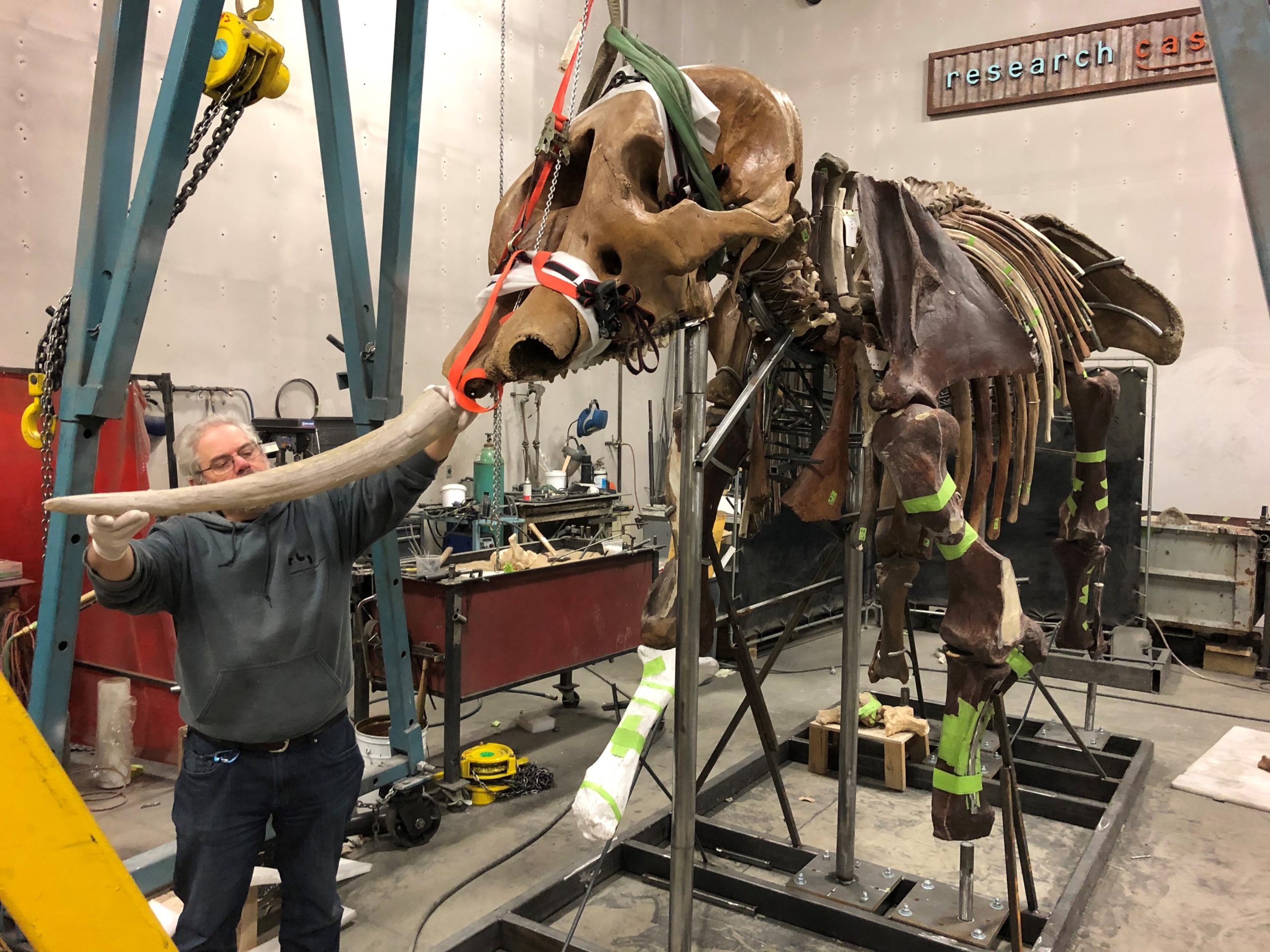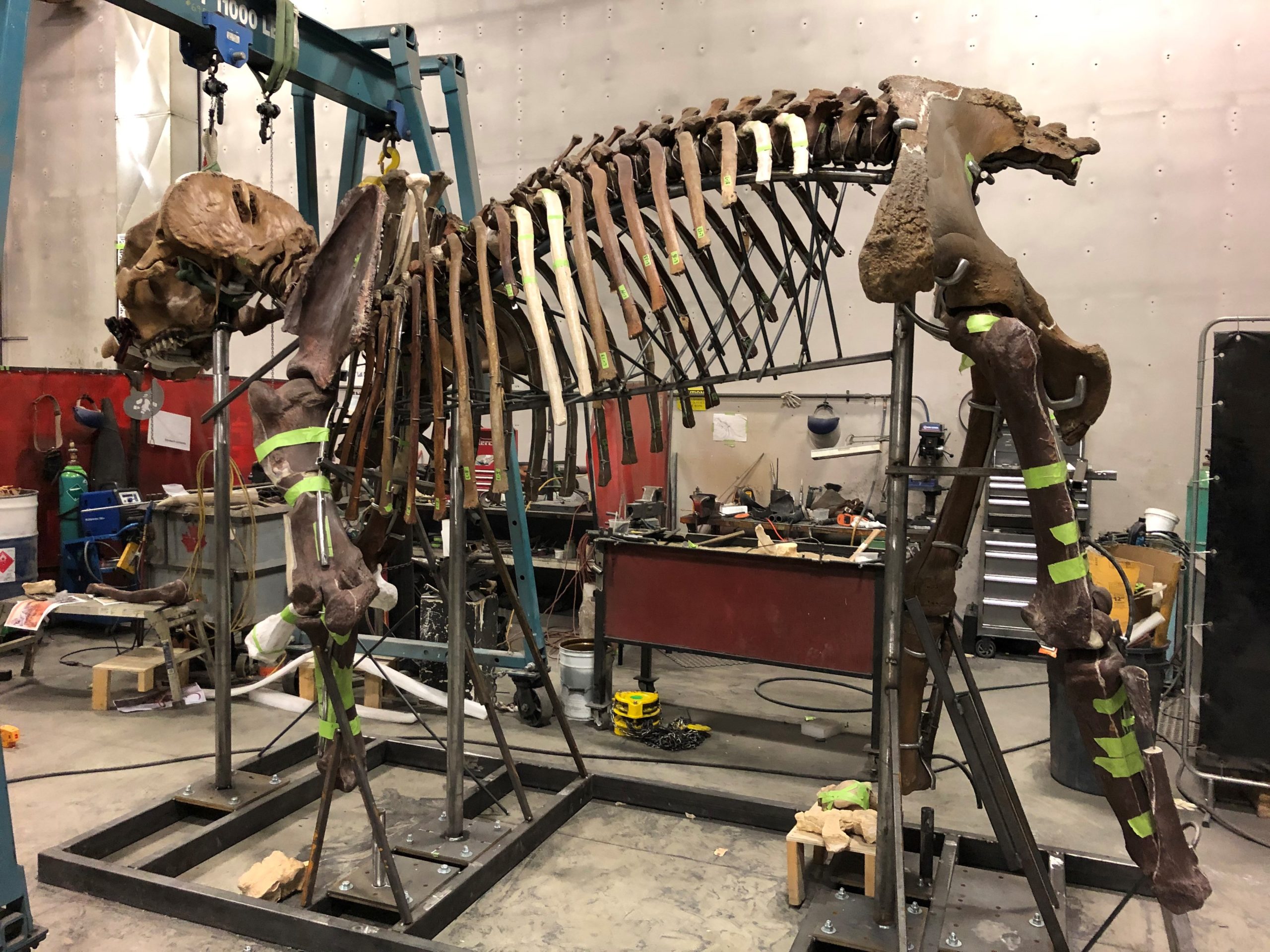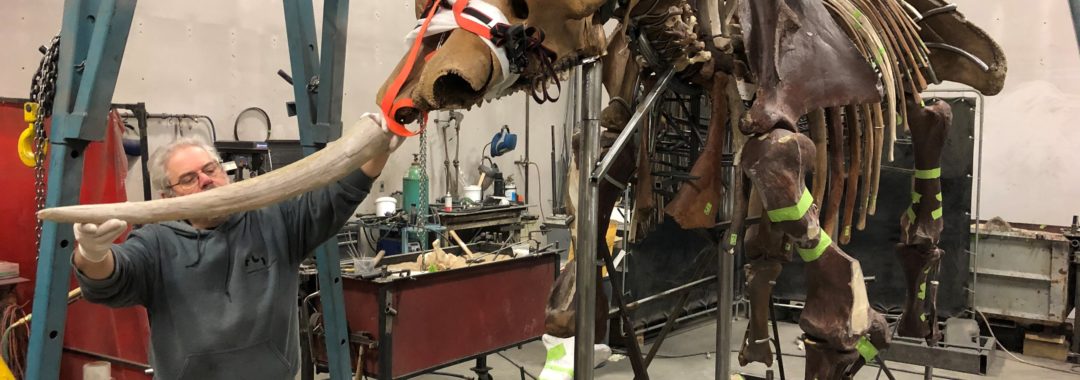
CMC Blog
Long live the extinct mastodon!
By: Glenn Storrs, Withrow Farny Curator of Vertebrate Paleontology
The American mastodon (Mammut americanum) is the iconic “Ice Age” creature of the Pleistocene epoch (2.58 million to 11,700 years ago) for North America, and an example of its extinct megafauna. This relative of the elephant is known from many fossil specimens across the continent, ranging from isolated teeth and partial bones to nearly complete skeletons. In the Cincinnati region, remains of mastodon, while not common, are also not exceedingly rare. They occasionally turn up in gravel pits and construction sites, weathering out of stream banks or in the bottom ooze of ponds and bogs. Most of these are of the isolated bone or tooth variety and even Big Bone Lick, Kentucky, about 20 miles south of Cincinnati, has produced only isolated remains. Granted, hundreds if not thousands of specimens have collected at Big Bone over the past 280 years, and some of these formed the basis for the original scientific description of the species. However, good skeletons are rare.
Among the many mastodon fossils in Cincinnati Museum Center’s collection, by far the best example is the Overmyer Mastodon (named for the generous farmer on whose land it was discovered), from an agricultural drainage ditch excavation near Rochester, Indiana. Collected in 1978 by staff, students and alumni of Earlham College, the skeleton was acquired by CMC in the late 1980s. Since that time, it has been the subject of several research projects, but has had little other public exposure. That is about to change as we prepare to install the restored skeleton in our newly refreshed Ice Age exhibit. In a sense, we will be bringing this mastodon back from the dead.
The skeleton is beautifully preserved and about 70% complete. Essentially the entire vertebral column, ribs, hips, a shoulder blade and most of two of the legs are present. The skull and mandible are particularly fine, although neither tusk was found, so these latter will be represented in the skeletal mount by replicas, just as two of the limbs will be. At least some of the missing portions may have been scattered or destroyed by the ditch excavating machinery prior to discovery. The bones were buried at the bottom of what was originally a glacial outwash pond and have been dated to about 12,500 years ago. Pollen from the site suggests an open woodland spruce-dominated forest environment. The skeleton was not fully mature at the time of death, because unfused sutures or growth plates are clearly visible on some of the bones. However, it was a young adult and evidence from its anatomy, especially the shape of the skull and the size and orientation of the tusk sockets relative to the grinding tooth row, indicate that the animal was female (at about 7.5 feet high at the shoulder, a relatively large female). Of special interest is a rib that shows evidence of a swollen and partially healed break, indicating an earlier injury. How and why the animal ultimately died is unknown.
In order to reconstruct the skeleton for exhibit, it’s necessary to fully clean and conserve the bones, restore those that are damaged and replicate and replace the missing elements. All of these are then fitted to a custom-built steel armature, carefully crafted to hold each bone in its proper place, while allowing for them to be individually removed as needed for future study. Much of this work is typically done by an outside contracting firm that specializes in the creation of exhibit mounts for museums. We are working with Research Casting International (RCI), a renowned exhibit firm based in Toronto, Canada that has done such work for major museums around the world. RCI came to Cincinnati last fall, packed the mastodon bones in purpose-built crates and, with the proper export paperwork, trucked them to their workshop. The bulk of the armature has now been fabricated in Toronto and the skeleton is starting to take shape again for the first time in over 12,000 years. Their team will fully articulate the skeleton in Toronto, disassemble it once again and transport it back to CMC for permanent installation in its Union Terminal home.
We hope that the new exhibit will be ready for a public unveiling in late fall. If you have the chance, come say hi to the resurrected Overmyer Mastodon this autumn, an animal soon to make its return among the “living!”

Figure caption 1. Overmyer Mastodon being assembled in the workshop of Research Casting International, Toronto.

Figure caption 2. Side view of the Overmyer Mastodon undergoing assembly. Note the few replicated ribs and other bones (lighter colored) created to replace those not found at the excavation site.
Museum Admission
Includes Cincinnati History Museum, Museum of Natural History & Science and The Children’s Museum.
| Adult (13+): | |
| Senior (60+): | |
| Child (3-12): | |
| Member Adult: | FREE |
| Member Child: | FREE |
Members receive discounts!
Become a Member today to save on programs, exhibits and films throughout CMC.
Museum Hours
Open Thursday – Monday
10 a.m. to 5 p.m.
Closed Tuesday and Wednesday
Closed Thanksgiving Day and Christmas Day
Member’s-only early entry: Saturdays at 9 a.m.
Customer Service Hours:
Monday – Sunday, 9 a.m. to 5 p.m.



